Roots Emerging From The Base Of Your Pot? Time To Repot Your Monstera Plant

HOUSEPLANTS > MONSTERA > REPOTTING

Elizabeth is a Permaculture Garden Designer, Sustainability Consultant and Professional Writer, working as an advocate for positive change. She graduated from the University of St. Andrews with an MA in English and Philosophy and obtained a Diploma in Applied Permaculture Design from the Permaculture Association.
Reviewed By COLIN SKELLY

Colin is a Horticulturist and Horticultural Consultant with experience in a range of practical and managerial roles across heritage, commercial and public horticulture. He holds the Royal Horticultural Society’s Master of Horticulture award and has a particular interest in horticultural ecology and naturalistic planting for habitat and climate resilience.
MONSTERA GUIDES
Repotting
The Swiss cheese plant, Monstera deliciosa, is a popular house plant which is generally remarkably easy to grow.
However, there are certain issues that may occur and you do need to think about certain things when repotting a Swiss cheese plant.
In this guide, we will help you understand some of the things that can go wrong when growing monsteras and we will share the best time to repot, as well as how to do so.
Common Issues
One reason to repot a Monstera is that there is a serious issue with the existing environment you have provided.
The existing container may be too small or too large for a smaller plant, or it might not have suitable drainage at the base.
A container should allow at least an inch of space around the root ball of the monstera on all sides, but too large a container right away can cause water-related issues.
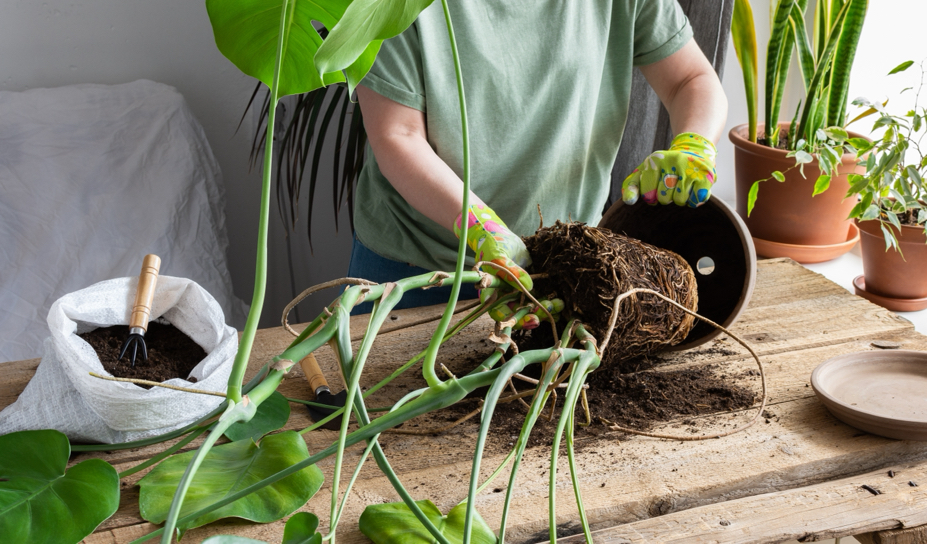
You also may not have chosen a suitable growing medium.
Monsteras need a good peat-free multipurpose compost or an equivalent homemade mix to thrive.
Finally, you might have overwatered your monstera and the growing medium may have become severely waterlogged and compacted.
Wilting leaves can be a sign that you have either watered too much or watered too little, but it can also be a sign that repotting is required.
When To Repot
Monsteras should be repotted as it grows to ensure that the roots continue to have at least an inch of growing medium around them.
If you see signs of wilting, check to make sure that the wilting is not occurring because the roots have run out of space.
If the roots are emerging from the base of the pot it is time to choose a new, larger container.

While monsteras are young, it is typical to repot them every spring before the new leaves emerge.
Monsteras can grow quite rapidly and to a huge size if allowed to do so.
Usually, those growing Swiss cheese plants indoors will pot up until the plant reaches the largest manageable size for their space, then prune the plant in order to restrict its growth and avoid the need to repot into ever-increasing sized containers.
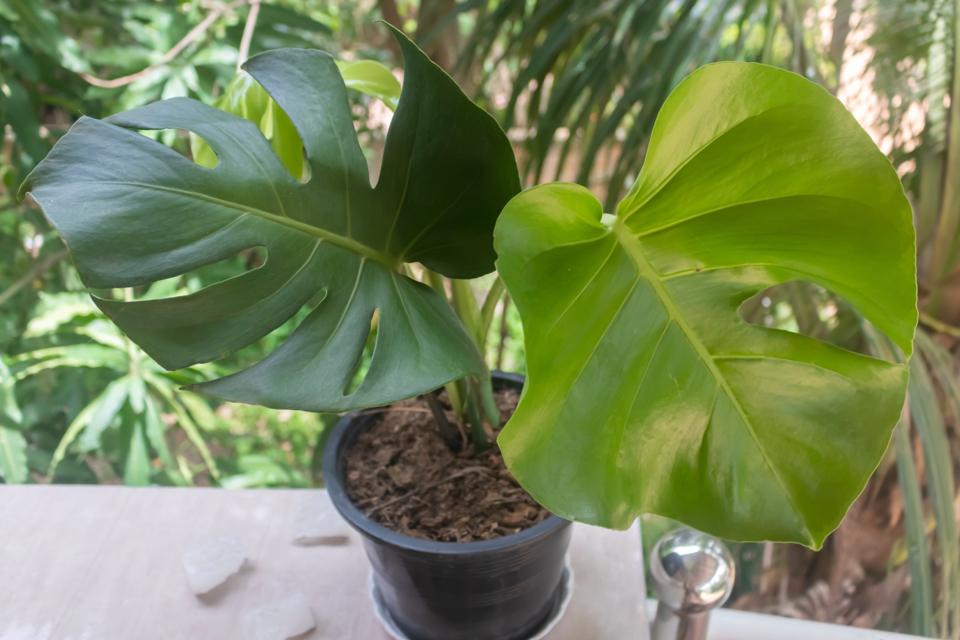
Once your monstera reaches a mature size and you no longer want to repot it into a larger container, repotting will not be required every year.
Instead, you will carefully remove the top 1/3 of the growing medium in the pot from around your monstera and replenish it with fresh potting mix each spring.
Choosing A Container
Remember to choose a pot which is sturdy and large enough to accommodate your monstera at its current stage of growth.
Smaller monsteras may easily find a place on a small windowsill, but larger, more mature specimens can grow much larger and will require much more commodious accommodation.
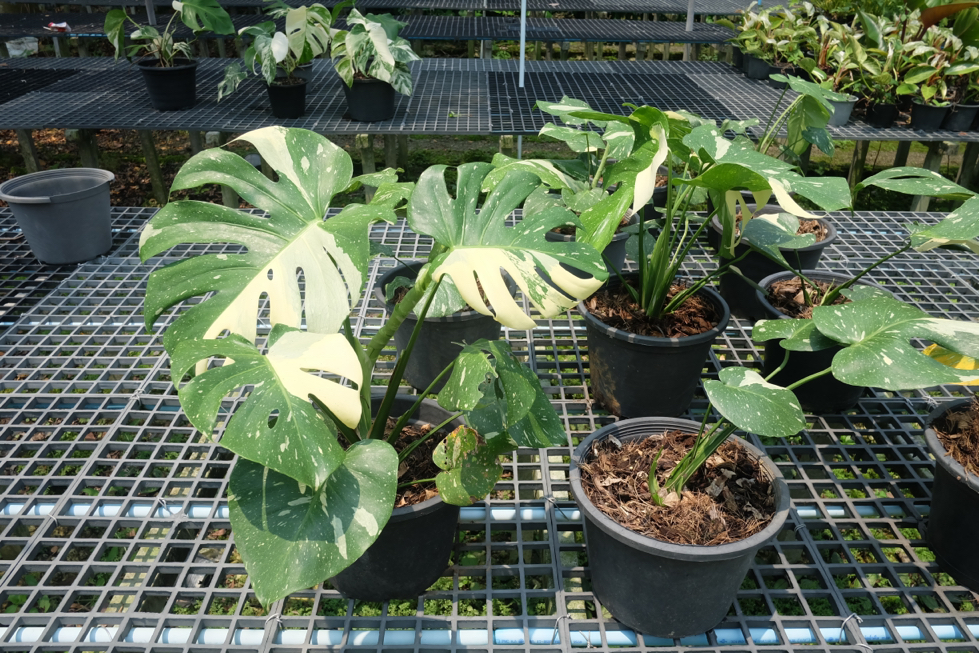
One other thing to remember is that larger specimens are typically going to require some support.
Typically, they are planted in a large pot with a moss-covered pole or wooden stake.
Make sure that your new pot for a mature specimen is large and heavy enough not to tip over and that it can accommodate your growing plant and its support.
How To Repot
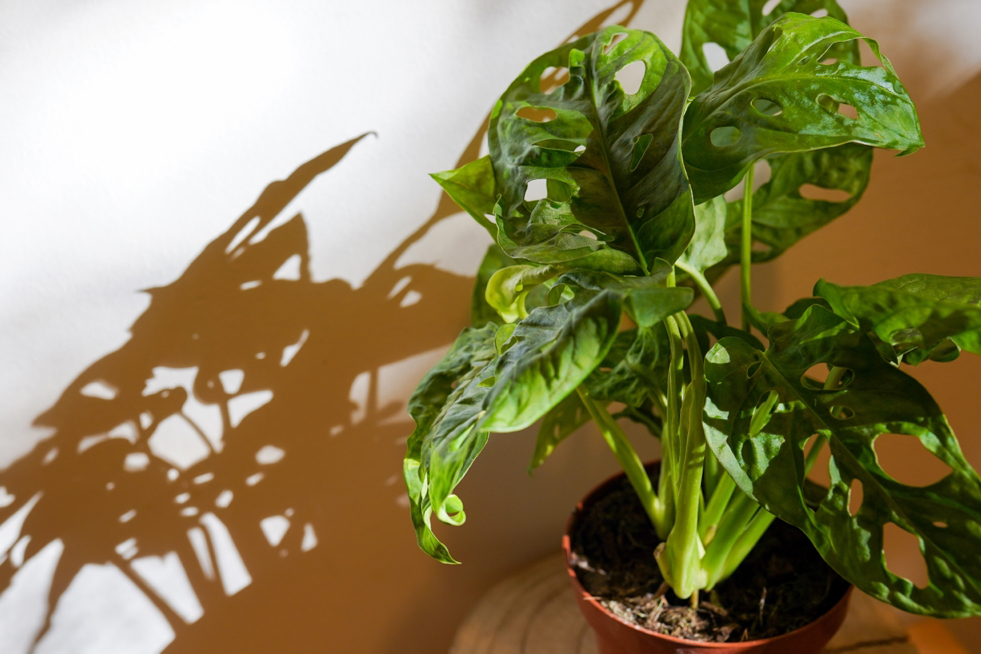
Follow the steps below to successfully repot your monstera:
- Choose your new container.
- Place a support stake or pole if required.
- Carefully remove your plant from its previous pot.
- Place the plant into the new container, so that it is sitting just slightly deeper than it was previously.
- Fill in the growing medium around the plant’s base roots and around any aerial roots which reach the potting medium.
- Where necessary, tie the plant gently to the new support.
- Water deeply immediately after repotting.
Ongoing Plant Care
After re-potting, you are going to want to care for your plant so that it is able to quickly establish itself in its new home.
Monstera are pretty easy to care for, even for those who do not have a lot of experience with houseplants.
Where To Place Your Monstera
Place Monstera in a light, bright location but somewhere out of direct sunlight, which can cause the leaves to burn.
A spot a few feet away from a window which lets in plentiful light can be ideal.
Avoid locating your potted plant too close to a heat source, and keep it out of drafts.

These plants prefer a place where there is moderate to high humidity and misting may be beneficial where the environment is prone to dryness.
In terms of temperatures, monsteras can cope with temperatures as low as 10°C and will grow as long as temperatures are above 18°C.
They will, however, do best when they are grown in temperatures between 20-30°C.
Watering
Monsteras require moderately moist conditions, but will not like overwatering or waterlogged conditions.
“Just as the light levels should reflect the forest floor from which monsteras come, so too should the moisture levels,” says Master Horticulturist Colin Skelly.
“Forest floors are typically high in decomposing leaf litter, which holds moisture but also drains freely.
“This is what your potting and watering should achieve – regular watering but in a pot and growing medium that allows the water to flow through freely rather than becoming clogged.”
Exact watering requirements will depend on the location, conditions and time of year.
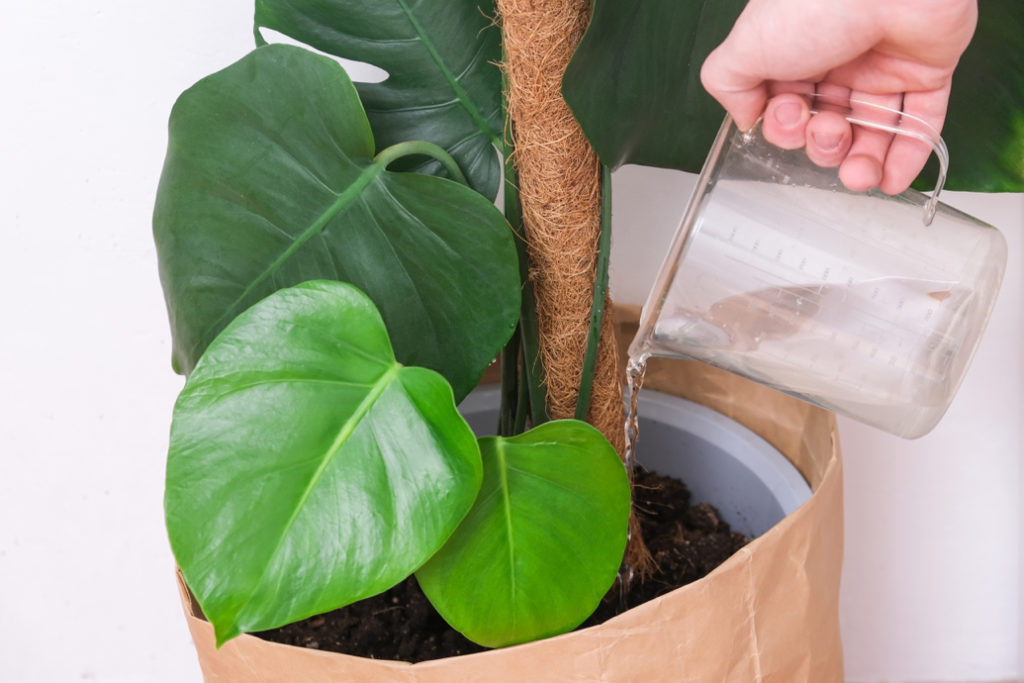
However, as a general rule of thumb, you should water when the top few centimetres of the growing medium are dry.
When they are, you should water well, allowing excess water to drain away freely.
Remember that your plant will need less water during the coldest winter months and more during warmer summer periods.
Pruning
Remember, to keep the size of a monstera in check and avoid repotting to an ever larger container, you will need to prune your monstera.
Pruning both the above-ground plant and the root system will help keep your Swiss cheese plant in check.
Stems can then be cut off at the base to restrict the size of the plant and keep it happy in the size of the container you have chosen.
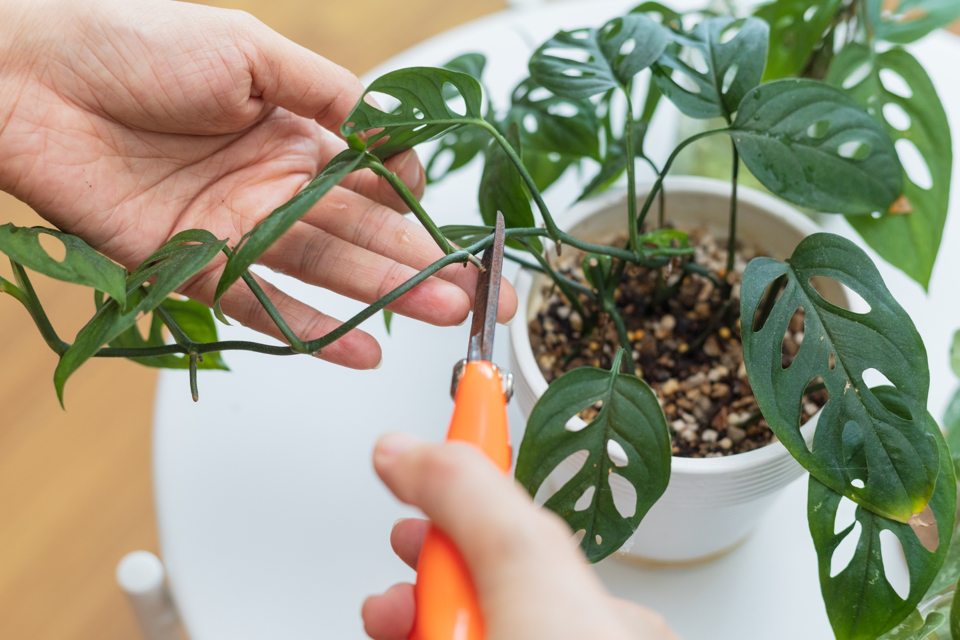
To keep a monstera small, you can also prune the roots.
Simply remove the plant from the pot, carefully brush away the soil, and tease out the roots.
You can cut back up to around a third of the subterranean roots from a mature plant to restrict its size without damaging its health.
Aerial roots (once these form on mature specimens) should be left in place if possible.
